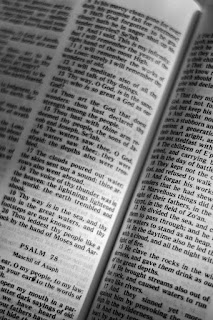A gospel harmony is an attempt to collate the Christian canonical gospels into a single account. Harmonies are constructed by some writers in order to make the gospel story available to a wider audience, both religious and secular. Harmonies can be studied by scholars to establsh a coherent chronology of the events depicted in the four canonical gospels in the life of Jesus, to better understand how the accounts relate to each other, and to critically evaluate their differences.
The terms harmony and synopsis have been used to several different approaches to consolidating the canonical gospels. Technically, a "harmony" weaves together sections of scripture into a single narrative, merging the four gospels. There are four main types of harmony: radical, synthetic, sequential, and parallel. By a contrast, a "synopsis," much like a parallel harmony, juxtaposes similar texts or accounts in parallel format, synchronized by time, while preserving their individual identity, usually in columns. Harmonies may also take a visual form and be undertaken to create narratives for artistic purposes, as in the creation of picture compositions depicting the life of Christ.
The oldest approach to harmonizing consists of merging the stories into a single narrative, producing a text longer than any individual gospel. This creates the most straightforward and detailed account, and one that is likely to be most accessible to non-academic users, such as lay churchgoers or peopke who are reading the gospel as a work of literature or philosophy.
There are, however, difficulties in the creation of a consolidated narrative. As John Borton points out, it is impossible to construct a single account from the four gospels without changing at least some parts of the individual accounts.
One challenge with any form of harmonizing is the events are sometimes described in a different order in different accounts--the Synoptic Gospels, for instance, describe Jesus overturning tables in the Temple of Jerusalem in the last week of his life, whereas the Gospel of John records a counterpart event only towards the beginning of Jesus' ministry. Harmonists must either choose which time they think is correct, or conclude that separate events are described. Lutheran theologian Andreas Osiander, for instance, proposed in Harmonia evangelica (1537) that Jesus must have been crowned with thorns twice, and that there were three separate episodes of cleansing of the Temple. On the other hand, commentators have long noted that the individual gospels are not written in rigolously chronological format. This means that an event can be described as falling at two different times and still be the same event, so that the substantive details can be properly brought together in a harmony, although the harmonist will still have the task of deciding which of the two times is more probable.
A less common but more serious defficulty arises if the gospels diverge in their substantive description of an event. An example is the incident involving the centurion whose servant is healed at a distance. In the Gospel of Matthew the centurion comes to Jesus in person; in the Luke version he sends Jewish elders. Since these accounts are clearly describing the same event, the harmonist must decide which is the more accurate description or else devise a composite account.
The modern academic view, based on the broadly accepted principle that Matthew and Luke were written using Mark as a source, seeks to explain the differences between the texts in terms of this process of composition. For example, Mark describes John the Baptist as preaching the forgiveness of sins, a detail of which is dropped by Matthew, perhaps in the belief that the forgiveness of sins was exclusive to Jesus.
The modern popularizing view, on the other hand, while acknowledging these difficulties, deemphasizes their importance. This view suggests that the divergences in the gospels are a relatively small part of the whole, and that the accounts show a great deal of overall similarity. The divergences can therefore be sufficiently discussed in footnote in the course of a consolidated narrative, and need not stand in the way of conveying a better overall view of the life of Jesus or of making this material more accessible to a wider readership.
x-------x
Picture from Pexels.


Comments
Post a Comment